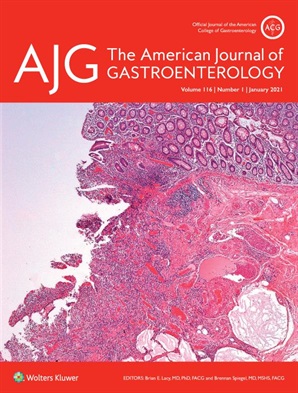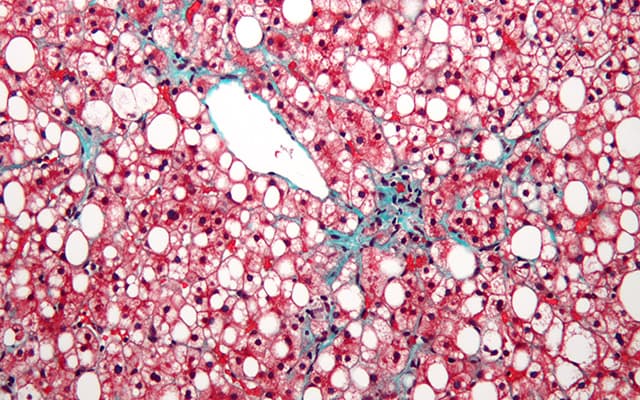A potential drug successfully treats the severe form of nonalcoholic fatty liver disease in non-human primates — bringing scientists one step closer to the first human treatment for the condition that is rapidly increasing around the world, a study suggests. Nonalcoholic steatohepatitis (NASH) causes scarring and inflammation in the liver and is estimated to affect up to 6.5% of the global population.
Tag: Nonalcoholic Fatty Liver Disease
Alternate-day fasting a good option for patients with fatty liver disease
Nutrition researchers studied 80 people with nonalcoholic fatty liver disease and found that those who followed an alternate-day fasting diet and exercised were able to improve their health. In Cell Metabolism, the researchers report that over a period of three months people in the intervention saw increased insulin sensitivity and decreased liver fat, weight and ALT, or alanine transaminase enzymes, which are markers for liver disease.
College of Medicine research confirms exercise as treatment for nonalcoholic fatty liver disease
Penn State College of Medicine researchers confirmed exercise can lead to meaningful reductions in liver fat for patients with nonalcoholic fatty liver disease.
Consumption of fast food linked to liver disease
A study from Keck Medicine of USC published today in Clinical Gastroenterology and Hepatology found that eating fast food is associated with nonalcoholic fatty liver disease, a potentially life-threatening condition in which fat builds up in the liver.
August Issue of Issue of The American Journal of Gastroenterology Includes Diet-Associated NAFLD Risk and Increased Risk of Mortality from COVID-19 Among PPI Users
The August issue of The American Journal of Gastroenterology includes clinical discussions of diet-associated NAFLD risk and increased risk of mortality from COVID-19 among PPI users. In addition, this issue features clinical research and reviews on IBS, gender barriers for CRC screening, hepatitis C, eosinophilic esophagitis, and more.

January Issue of The American Journal of Gastroenterology Includes New Clinical Guideline on Irritable Bowel Syndrome
The January issue of The American Journal of Gastroenterology is now available and features new clinical research across a wide range of GI and hepatology topics, including NAFLD, colorectal cancer screening, GERD, post-COVID-19-associated functional GI disorder surges, celiac disease, and more.
Amino Acid Connected to NAFLD Could Provide Treatment Clues
Basic science research explores the effects of impaired glycine metabolism in nonalcoholic fatty liver disease – and how to potentially use glycine-based treatment to help people with NAFLD.
Cirrhosis in North American Women on the Rise, Trend Especially Worrisome in Young Women
Data from a new study presented this week at The Liver Meeting Digital Experience® – held by the American Association for the Study of Liver Diseases – found that the burden of cirrhosis in women in North America has increased substantially in recent years, a worrying trend driven by a rise in alcohol-related liver disease (ALD) and nonalcoholic fatty liver disease (NAFLD). Projections suggest that both ALD and NAFLD rates will result in even higher cirrhosis incidence by 2040, with the most worrisome upward trends seen in young women with ALD and post-menopausal women with NAFLD.

U.S. News & World Report: UC San Diego #1 for Gastroenterology and Hepatology Research
U.S. News & World Report named University of California San Diego School of Medicine a top global university and ranked the divisions of Gastroenterology and Hepatology #1 in the world for research.
Exercise and Insulin Metabolism in NAFLD
The obesity epidemic has led to an increase in the number of people who have a form of liver disease known as nonalcoholic fatty liver disease, or NAFLD. The disease can cause dangerous levels of fat to build up in…
Wayne State-led team explores link between diabetes, obesity and liver disease
Faculty from Wayne State University’s Eugene Applebaum College of Pharmacy and Health Sciences are leading a team of researchers to understand the causal relationships between diabetes, obesity and nonalcoholic fatty liver disease in hopes of developing a treatment.

Novel Antisense Drug Shows Promise in Slowing Fatty Liver Disease
A first-in-class clinical trial suggests a novel treatment measurably slowed progression of non-alcoholic fatty liver disease to its more progressive and deadly form.
Researchers Identify Potential Early Biomarker to Track Development of Dangerous Non-alcoholic Fatty Liver Disease
Fatty liver disease not associated with alcohol consumption, which is called Nonalcoholic Fatty Liver Disease or NAFLD, affects more than one billion people worldwide. Even in children the numbers are overwhelming, with up to 80 percent of pediatric patients who are considered obese affected worldwide. People with NAFLD can progress to a severe form known as nonalcoholic steatohepatitis (NASH), which puts patients at higher risk for cirrhosis or liver cancer.